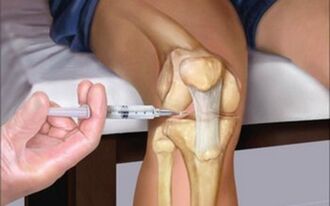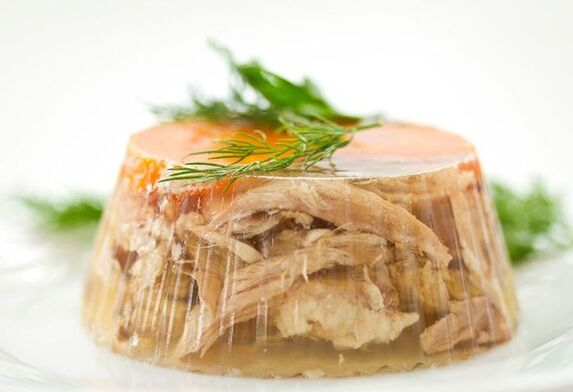
Arthritis and arthritis are pathological processes in the human body that involve different joints. Because of the similarity of these terms, many are unaware of the difference between the two. In fact, arthritis and arthrosis are not the same disease. And there are significant differences between them. It is important to study their main symptoms so that if they do appear, visit the hospital immediately. You also need to know which doctor is treating your arthrosis so you can turn to qualified honey in time. specialist.
Do not self-heal. See your doctor at the first sign of the disease.
Arthrosis of the joints is a complex degenerative disease that involves the destruction of cartilage tissue within the joints. This pathological process is the most common joint disease in the world. According to the latest statistics, about 80% of the world’s population suffers from this. But most people have no exact idea of what arthrosis is. With this disease, for a long time, various changes and rearrangements occur at the joint ends of the bones and inflammatory processes develop. As a result, the periarticular tissues degenerate.
Many people ask the same question - how is arthritis different from arthritis? Arthrosis is a pathology that results in damage to the large and small joints. Arthritis is an inflammatory disease of the entire human body. Changes in the body do not only affect the joints. The most common disease of arthritis is the heart and kidneys. If not treated properly, complications and even death can occur.
The likelihood of developing arthrosis or arthritis is significantly increased between the ages of 40 and 50. The disease affects women and men equally. The disease occurs in able-bodied people and has recently become much younger (those over 30 have arthrosis). Therefore, it is very important to know what arthrosis is and how to properly treat this pathology.
Cause
Like arthritis, arthritis occurs in the body due to the metabolic failure of certain joints. This leads to a loss of elasticity of the cartilage tissue.
Cartilage in the joints of the limbs can be destroyed due to disorders of hormone production, decreased blood supply to the joints, and injuries. In addition, some diseases, such as rheumatoid arthritis, can cause arthritis.
Main reason:
- history of limb injuries;
- high age;
- severe hypothermia;
- the presence of inflammatory processes in the large and small joints (arthritis and arthrosis are two simultaneous diseases);
- increased body weight. In this case, there will be a constant additional load on the joints;
- general intoxication of the body;
- common SARS, acute respiratory infections and influenza;
- pathological processes in the thyroid gland;
- hemorrhage;
- Perthes disease.
Arthrosis of the joints can also develop in a person due to genetic disorders - collagen mutations, dysplasia.
Symptoms
Symptoms of arthrosis appear almost immediately. The first sign of an abnormal process is severe pain when a certain joint is loaded. The pain is relieved when the joint is at rest. In medical circles, we distinguish the following groups of symptoms of arthrosis:
- pain.Sharp pain only occurs when certain movements are performed. Its localization is at the site of the affected joint. There is virtually no discomfort at night as the joint is at rest. Pain at rest can only manifest itself during the progression of arthrosis;
- joint mobility decreases.This is also true for arthrosis and arthritis. In the early stages of the disease, this symptom does not cause much concern to the patient. But soon the muscles start to cramp. The gap between the joints almost completely disappears;
- crunch.The reason for its appearance is that due to the disease, the softness of the rotation of the bone decreases in the joint. His voice is "dry";
- deformity of the affected joint.This is due to the proliferation of osteophytes. This symptom appears last. Arthrosis is the most difficult to treat at this stage.
Stages of the disease
All of these signs of arthrosis occur at different stages in the development of the disease. In medical practice, three grades are distinguished:
- Grade I arthrosis. Symptoms of arthrosis are not pronounced. Most often, minor joint pain occurs during exertion or long walks. Pathological changes begin in the fluid and synovium. Treatment of arthrosis at this stage is most effective;
- Grade 2 arthrosis.The joint is destroyed. Osteophytes are formed. The pain during exercise and movement becomes stronger, with a characteristic crackling in the affected joints;
- Grade 3 arthrosis.This is the most difficult stage in the development of the disease. A pathological change occurs at the site of diseased joints. Inflammation occurs. During movement, the patient feels stiffness because the muscles are unable to fully contract and perform their functions.
Joint arthrosis in the third stage of development is extremely difficult to cure. You will have a better chance of success if you find a qualified professional. Many ask the question - which doctor treats arthrosis? In this case, you should seek help from a rheumatologist. It is a narrow specialist who deals with the treatment of dystrophic and inflammatory diseases of the connective tissue and joints, such as arthrosis and arthritis.
Complications
Failure to start treatment for arthrosis in the early stages of development can lead to the following consequences:
- complete destruction of the joint;
- it becomes almost impossible to perform various movements;
- disc herniation;
- a person's disability;
- complete deformation of the joint;
- the patient's standard of living will decline.
Treatment
The question of treating arthrosis is asked by every person who has shown the first signs of the disease. The easiest way to do this is in the early stages of the pathological process, until the violations become irreversible. The essence of therapeutic measures is to eliminate the causes of the development of arthrosis and to eliminate the inflammation of the joints.
Treatment for arthrosis can only be comprehensive. This includes taking medications (tablets, mixtures) with analgesic and anti-inflammatory properties. Physiotherapy procedures are also needed.
Principles of arthrosis treatment:
- eliminates excessive strain on the joints;
- treatment with anti-inflammatory and analgesic tablets. In addition, in complex therapy, chondroprotectors are actively used for arthrosis;
- physiotherapy;
- spa treatment;
- magnetotherapy, electrotherapy, laser therapy, shock wave therapy;
- intraarticular oxygen therapy;
- intraosseous blockade;
- it is important to choose the right diet for arthrosis.
Drug treatment
How to cure arthritis with drugs? This question is the most common among patients. Treatment is given using three groups of medicines:

- hormonal corticosteroids.Effective in the acute stage of arthrosis. Introduction - intraarticular. The tablets are less effective in this case;
- anti-inflammatory drugs.They are used to reduce inflammation in the joints and to relieve pain. Doctors do not recommend taking the tablets to patients because they irritate the stomach mucosa to some degree. Therefore, they are most often injected into a vein or muscle;
- chondroprotectors for arthrosis.They are used to restore the structure of cartilage. Chondroitin sulfate is most commonly prescribed because this drug is very effective. The use of chondroprotectors in arthrosis gives positive results in the first stages of the pathological process.
Folk recipes
Nowadays, most people do not want to take pills or injections. Therefore, the question is asked - how can arthrosis be cured using folk remedies? Such funds are largely aimed at increasing body tone, improving blood circulation, relieving pain, and increasing immunity. Treatment of arthrosis with folk remedies is most effective in the early stages of the pathological process. Recipes based on the following plants are used to treat this disease:
- ginger;
- Kalanchoe;
- celery seeds;
- castor oil seeds;
- cinnamon;
- curcuma;
- ponytail.
Tinctures of bay leaf, horseradish, garlic and rye grains are also considered effective. Treatment of arthrosis with folk remedies is most effective when combined with medication.
Nutrition for arthrosis
The diet for arthrosis has peculiarities. Diet monitoring is especially important as the disease worsens. Do not eat too much as the weight and strain of the affected joint will increase. But you can't starve either. Cartilage should receive the required amount of micronutrients.
The diet for arthrosis is aimed at reducing overweight. Therefore, carbohydrates should be excluded from the diet. Sweet, floury, alcoholic beverages are completely excluded.
Fish dishes can be included in the daily diet. Preference should be given to low-fat varieties. The leading role in the treatment of arthrosis is assigned to everyone’s favorite food - jelly meat. Many doctors recommend using it as a real panacea for the joints. It contains all the necessary trace elements. But the most important component of the vessel is natural collagen.

The diet for arthrosis should be regular. It is important to eat in detail. The daily menu should include foods rich in vitamin B, which are needed to regulate metabolism.
If you stick to your arthrosis diet, you can achieve a significant improvement in your overall condition.
Nutrition principles:
- the menu should be perfectly balanced;
- heavy foods should not be eaten at night. It can trigger an attack of arthrosis;
- if the disease is not in the exacerbation stage, it is better to walk a little after eating;
- the food must be fragmentary;
- it must constantly monitor its weight and prevent it from growing;
- if tablets are prescribed, food intake and consumption (before or after meals) should be clearly regulated.
An arthrosis diet not only helps eliminate the unpleasant symptoms of the disease, but also improves the condition of the joints.
Prophylaxis
Prevention of arthrosis begins with proper nutrition. You should try to reduce your salt intake as well as foods that can disrupt your metabolism. These include legumes, fatty meats and alcohol. The diet includes cabbage, herbs and fish.
Physical education and warm-up are needed to prevent arthrosis. If possible, it is better to walk a few kilometers. It is also important to monitor your weight and prevent weight gain as this will put additional stress on your sore joints. It is not recommended to take tablets for weight loss as they may disrupt the body's metabolism.















































